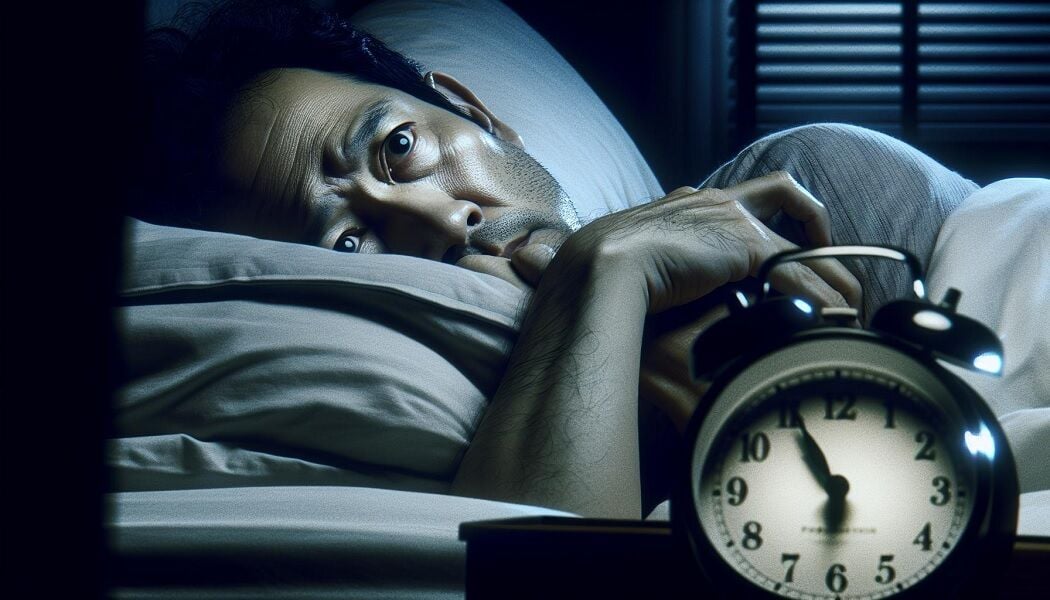Beat common sleep disorders: Unlock solutions for restful nights

It may come as a surprise to many that achieving a restful night’s sleep proves to be a challenging endeavour for individuals globally. Indeed, difficulties related to sleep are significant concerns that affect both adults and children universally. These subtle yet impactful issues can disrupt our capacity for tranquil slumber, underscoring the importance of gaining a deeper understanding of them. Why is this critical? Comprehending the factors that hinder our nocturnal rest is the initial step towards securing those coveted moments of deep sleep and enhancing our daily vitality.
The realm of sleep disorders is indeed comprehensive; however, there exists the International Classification of Sleep Disorders (ICSD), which aids medical professionals in diagnosing potential causes behind inadequate sleep. Whether it’s battling with insomnia characterized by restless nights or confronting snoring due to obstructive sleep apnea, early recognition of these symptoms is crucial.
Today, we’re diving into some common culprits like REM Sleep Behavior Disorder and Restless Legs Syndrome among others. By picking up some handy knowledge and trying out different ways to tackle these challenges head-on, we can make strides in kissing those restless nights goodbye. Our goal here? To boost your sleep quality and help you feel awesome all day long! So come along for the ride as we embark on this journey towards blissful slumber together.
Overview of common sleep disorders
Sleep enthusiasts, we are presented with an imperative subject matter – the quality of our slumber. Frequently, our indispensable rest is interrupted by widespread sleep disorders such as insomnia, narcolepsy, sleep apnea, and Restless Legs Syndrome (RLS). These ailments significantly hinder the attainment of a tranquil night’s sleep.
Insomnia often serves as a considerable barrier to peaceful nights. It is characterized by difficulties in initiating or maintaining sleep throughout the night. Beyond merely inducing fatigue in the subsequent day, insomnia profoundly affects mood regulation and overall health. Moreover, consider narcolepsy – have you ever experienced an overpowering need for sleep during daylight hours despite adequate nocturnal rest? This symptom distinctly signifies the presence of narcolepsy.
While professional medical intervention may be necessary for the comprehensive management of these conditions, adopting positive lifestyle changes can significantly contribute to improved sleeping habits. Prioritizing your mental well-being through understanding and addressing common sleep disorders showcases a proactive approach towards achieving optimal health outcomes.
Insomnia

When tackling common sleep disorders, insomnia often tops the list. It’s a condition that can significantly hamper your quality of life, making understanding its roots and symptoms critical.
Causes of Insomnia
Understanding why some of us struggle to catch those Zs at night can be a bit like solving a puzzle, with pieces that include our minds, bodies, and even where we sleep. Feeling anxious or blue can kick off this tricky cycle where not sleeping well makes those feelings worse, and then those heavier emotions make it even harder to drift off into dreamland. On the body side of things, dealing with constant pain or having our hormones out of whack can also keep us tossing and turning. And let’s not forget about where we’re trying to snooze – too much light, noise, or even a mattress that doesn’t feel just right can all mess with our shut-eye.
Our daily habits play a big part too. Keeping odd hours for bedtimes, scrolling through our phones late into the night, or sipping on one too many coffees can lead us down the path to restless nights. For many folks, it’s not just one thing causing trouble but a mix of several factors that makes figuring out how to get better sleep quite the challenge.
Symptoms of Insomnia
Acknowledging the possibility of insomnia constitutes a significant step toward managing it effectively. It’s important to recognize that this condition is widespread, affecting many individuals in their pursuit of restful sleep. The experience of lying awake, anticipating sleep’s arrival, is a familiar scenario for those suffering from insomnia. Furthermore, frequent awakenings during the early morning hours contribute to challenges in achieving a refreshed and alert state upon waking.
During the day, if you’re feeling wiped out or your energy just isn’t where it usually is, along with maybe being a bit more moody or snappy than usual, these could be signs pointing towards insomnia. It doesn’t stop there; struggling to focus or remember things can also sneak up on you, making school or work feel even more challenging and adding extra stress to your plate.
Sleep apnoea

Sleep apnea constitutes a considerable issue in the realm of prevalent sleep disorders. It extends beyond mere snoring, representing a condition that may influence every aspect of an individual’s life.
Types of sleep apnoea
Did you know Sleep Apnoea comes in two main flavours? First up is Obstructive Sleep apnea (OSA) – it’s the one most folks bump into. It happens when your airway takes a little nap of its own because of relaxed throat muscles. Then, there’s Central Sleep Apnoea, which is rarer but still worth a mention. This one’s all about the brain forgetting to remind your breathing muscles to do their job. Both types can throw a wrench in getting good sleep, but OSA? It’s famous for bringing on some serious snoring and making you stop breathing now and then.
Effects of sleep apnoea
The consequences of Sleep Apnea extend beyond nocturnal disturbances, significantly influencing daytime energy levels, attention span, and emotional state. The following are the principal effects:
Feeling tired all the time? It might be because your sleep is getting interrupted too much, leaving you dragging through your day. And if you’ve heard about Obstructive Sleep Apnea (OSA), it’s a sneaky thing that can mess with your heart by pushing your blood pressure up and making it work harder than it should. Not fun, right? Plus, if sleeping is a battle, it could make feelings of depression or anxiety pop up or get worse, and even make it hard to keep focused or remember things.
Now, don’t worry! There are ways to tackle sleep apnea so you can catch those Zs peacefully. Simple changes like watching your weight and how you lie down to sleep can do wonders. And if things are a bit more serious, there’s gear like CPAP machines or mouthpieces that help keep the air flowing smoothly while you snooze, or even some surgical options if needed. It’s super important to take care of this stuff not just for better sleep but to keep you feeling good all around.
Restless leg syndrome
Restless Leg Syndrome (RLS) significantly disrupts sleep for many, positioning itself as a key player among common sleep disorders. It manifests as an irresistible urge to move your legs, usually due to uncomfortable sensations. Understanding RLS’s triggers and managing its impact is essential for alleviating its symptoms and enhancing sleep quality.
Triggers of restless leg syndrome
Several elements may precipitate or intensify the symptoms of Restless Legs Syndrome (RLS). These include:
Extended Inactivity: Symptoms often deteriorate when one is seated or reclined for prolonged durations.
Iron Deficiency: A correlation exists between reduced iron levels in the body and the amplification of RLS symptoms.
Pregnancy: RLS is frequently reported by pregnant women, especially during the final trimester, though symptoms generally ameliorate after childbirth.
Obesity: Elevated Body Mass Indexes (BMIs) have been associated with an increased risk of developing RLS.
Medication: Certain pharmaceuticals may exacerbate RLS symptoms. It is imperative to consult a healthcare professional before altering any medication regimen.
Management of restless leg syndrome
Dealing with Restless Legs Syndrome (RLS) can turn things around for your sleep! Here are some friendly tips to help you out:
Healthy Sleep Habits: Setting up a regular bedtime routine is a game-changer in calming those restless legs. Keep it consistent, and you’ll feel the difference.
Get Moving: A little exercise goes a long way! Regular, gentle workouts can seriously soothe those RLS symptoms. It’s like giving your legs a chill pill!
Eat Right, Feel Bright: Munching on balanced meals and steering clear of too much caffeine can do wonders. Your legs—and your whole body—will thank you.
Iron Boosts and Helpful Meds: If you’re running low on iron, popping some supplements might just be the trick. And don’t forget, there are medications out there that could help too, but always chat with your healthcare buddy first.
Cool Gadgets: Nifty devices are designed to make your legs feel more relaxed and less twitchy at night. Worth a try!
Knowing what makes your RLS go nuts and having a solid plan to tackle it not only eases those leg jitters but also gifts you better sleep and overall happiness. Let’s kick RLS to the curb together!
Narcolepsy
Addressing sleep disturbances such as Restless Leg Syndrome (RLS) constitutes a significant advancement towards enhanced sleep health; however, it is not the sole aspect requiring attention. Narcolepsy represents another prevalent sleep disorder that demands our comprehension and support, ensuring that everyone achieves the restorative night’s sleep they merit. Just like with RLS, spotting the signs early and getting the right help can make a world of difference to how well you sleep and how great you feel during the day. It’s super important to remember that taking care of your sleep is just like taking care of your overall health.
Delving into the enigmatic world of slumber, we uncover the science behind sleep, unravelling its complexities from dream patterns to disorders. This exploration not only illuminates the biological mechanisms governing our rest but also offers insights into enhancing sleep quality, ultimately unlocking the secrets of the night.

































